
How to Use XIAO ESP32C6: Examples, Pinouts, and Specs
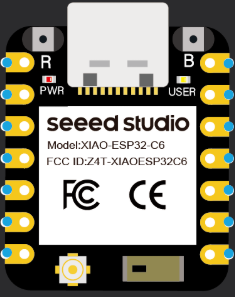
 Design with XIAO ESP32C6 in Cirkit Designer
Design with XIAO ESP32C6 in Cirkit DesignerIntroduction
The XIAO ESP32C6 by SEEED Studio is a compact and powerful microcontroller board built around the ESP32-C6 chip. It features integrated Wi-Fi 6 and Bluetooth 5.0/LE capabilities, making it an excellent choice for IoT applications, smart devices, and rapid prototyping. Its small form factor and low power consumption make it ideal for wearable devices, home automation, and other space-constrained projects.
Explore Projects Built with XIAO ESP32C6
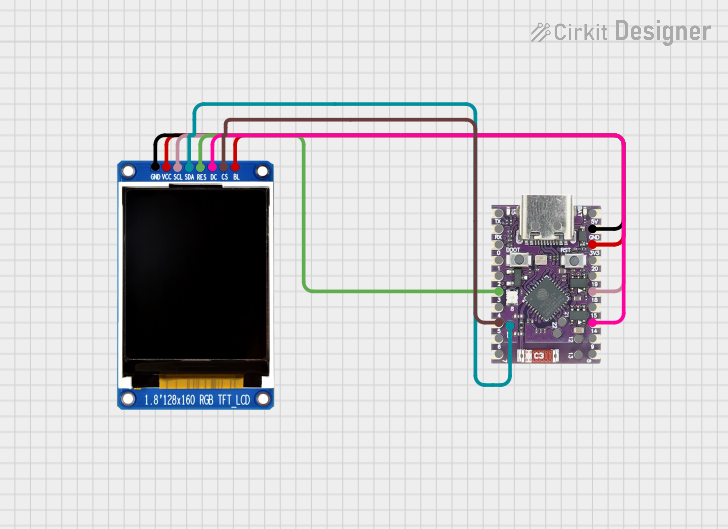
 Open Project in Cirkit Designer
Open Project in Cirkit Designer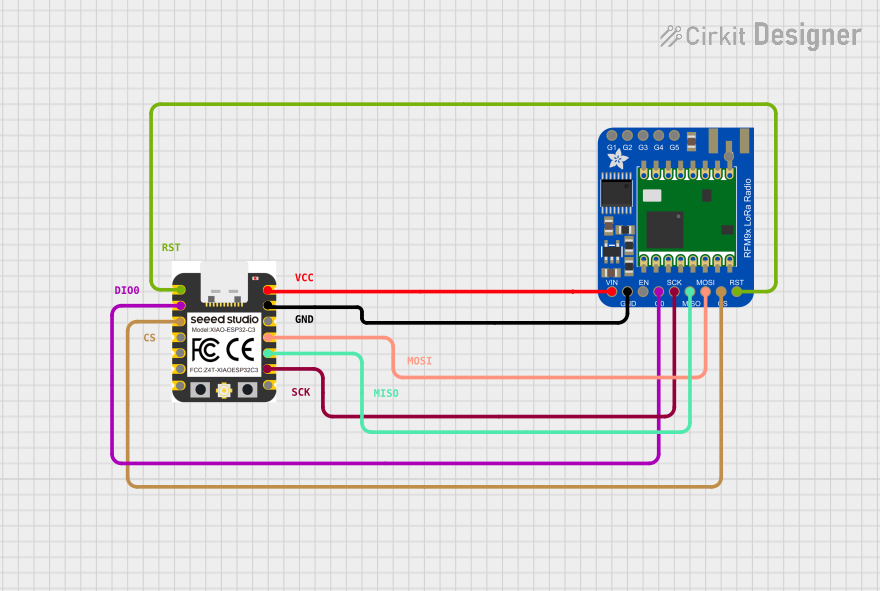
 Open Project in Cirkit Designer
Open Project in Cirkit Designer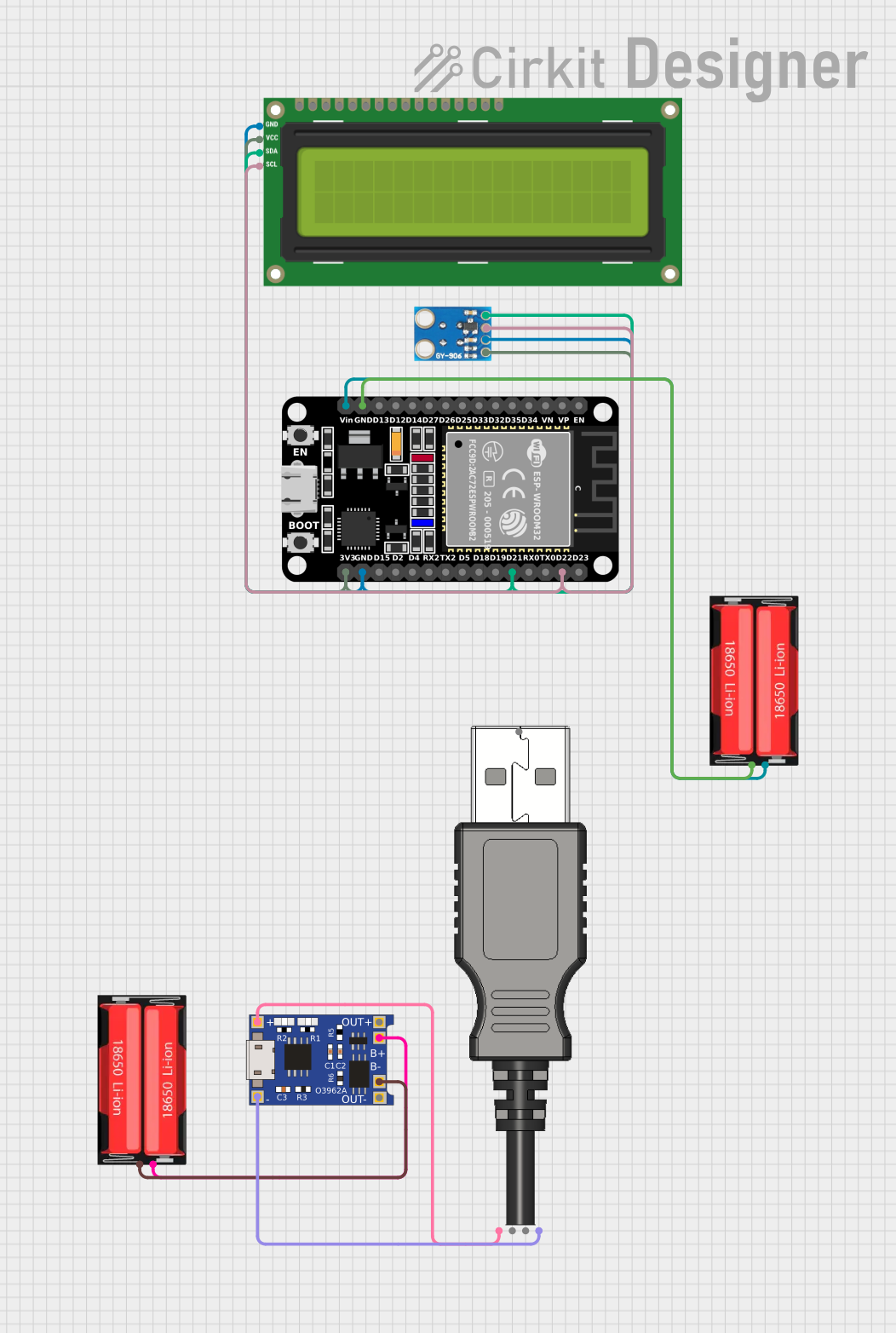
 Open Project in Cirkit Designer
Open Project in Cirkit Designer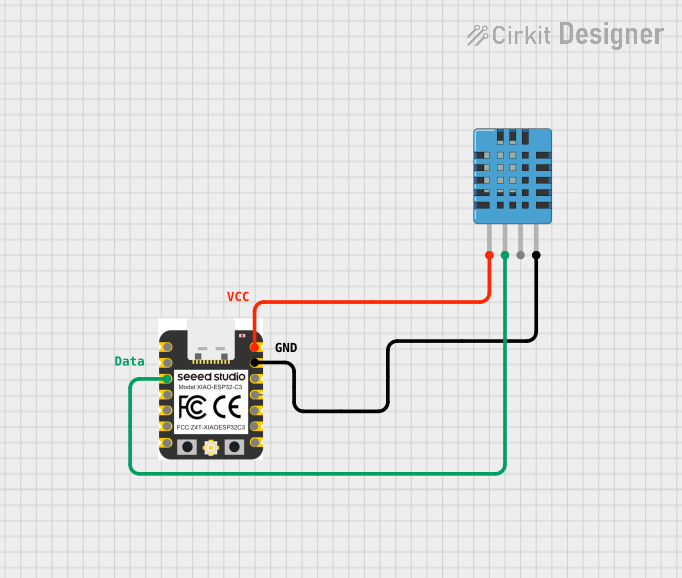
 Open Project in Cirkit Designer
Open Project in Cirkit DesignerExplore Projects Built with XIAO ESP32C6

 Open Project in Cirkit Designer
Open Project in Cirkit Designer
 Open Project in Cirkit Designer
Open Project in Cirkit Designer
 Open Project in Cirkit Designer
Open Project in Cirkit Designer
 Open Project in Cirkit Designer
Open Project in Cirkit DesignerCommon Applications and Use Cases
- IoT devices and smart home systems
- Wearable technology
- Wireless sensor networks
- Prototyping for Wi-Fi and Bluetooth-enabled projects
- Low-power applications requiring efficient connectivity
Technical Specifications
Key Technical Details
| Parameter | Value |
|---|---|
| Microcontroller | ESP32-C6 (RISC-V single-core processor) |
| Clock Speed | Up to 160 MHz |
| Flash Memory | 4 MB |
| SRAM | 512 KB |
| Wireless Connectivity | Wi-Fi 6 (802.11ax), Bluetooth 5.0/LE |
| Operating Voltage | 3.3V |
| Input Voltage Range | 5V (via USB-C) or 3.3V (via pins) |
| GPIO Pins | 11 (including ADC, I2C, SPI, UART, PWM) |
| ADC Resolution | 12-bit |
| Dimensions | 21 x 17.5 mm |
| Power Consumption | Ultra-low power modes available |
Pin Configuration and Descriptions
The XIAO ESP32C6 has a total of 14 pins, including power, GPIO, and communication pins. Below is the pinout description:
| Pin Number | Pin Name | Functionality |
|---|---|---|
| 1 | 3.3V | Power output (3.3V) |
| 2 | GND | Ground |
| 3 | D0 | GPIO, UART RX |
| 4 | D1 | GPIO, UART TX |
| 5 | D2 | GPIO, I2C SDA |
| 6 | D3 | GPIO, I2C SCL |
| 7 | D4 | GPIO, PWM |
| 8 | D5 | GPIO, PWM |
| 9 | D6 | GPIO, SPI MOSI |
| 10 | D7 | GPIO, SPI MISO |
| 11 | D8 | GPIO, SPI SCK |
| 12 | A0 | GPIO, ADC |
| 13 | RST | Reset |
| 14 | USB-C | USB interface for power and programming |
Usage Instructions
How to Use the XIAO ESP32C6 in a Circuit
Powering the Board:
- Use a USB-C cable to supply 5V power to the board.
- Alternatively, provide 3.3V directly to the 3.3V pin. Ensure the voltage is regulated.
Connecting Peripherals:
- Use the GPIO pins for digital input/output, PWM, or communication protocols (I2C, SPI, UART).
- For analog input, connect sensors to the A0 pin (12-bit ADC).
Programming the Board:
- Install the ESP32 board package in the Arduino IDE or use the ESP-IDF framework.
- Connect the board to your computer via USB-C and select the appropriate COM port.
Uploading Code:
- Write your code in the Arduino IDE or ESP-IDF.
- Click the upload button to flash the code to the board.
Important Considerations and Best Practices
- Ensure the input voltage does not exceed the specified range to avoid damaging the board.
- Use pull-up or pull-down resistors for GPIO pins when necessary.
- Avoid connecting high-current devices directly to the GPIO pins; use transistors or relays.
- For wireless applications, ensure the board is in an area with minimal interference.
Example Code for Arduino UNO Integration
The following example demonstrates how to blink an LED connected to GPIO pin D4:
// Define the GPIO pin for the LED
const int ledPin = 4;
void setup() {
// Initialize the LED pin as an output
pinMode(ledPin, OUTPUT);
}
void loop() {
// Turn the LED on
digitalWrite(ledPin, HIGH);
delay(1000); // Wait for 1 second
// Turn the LED off
digitalWrite(ledPin, LOW);
delay(1000); // Wait for 1 second
}
Troubleshooting and FAQs
Common Issues and Solutions
The board is not detected by the computer:
- Ensure the USB-C cable is a data cable, not just a charging cable.
- Check if the correct drivers for the ESP32-C6 are installed on your computer.
Code upload fails:
- Verify that the correct COM port is selected in the Arduino IDE.
- Press and hold the reset button while uploading the code to enter bootloader mode.
Wi-Fi or Bluetooth is not working:
- Ensure the board is in range of the Wi-Fi network or Bluetooth device.
- Double-check the SSID and password in your code for Wi-Fi connections.
The board overheats:
- Check for short circuits or excessive current draw from connected peripherals.
- Ensure proper ventilation and avoid operating in high-temperature environments.
FAQs
Q: Can the XIAO ESP32C6 run on battery power?
A: Yes, you can power the board using a 3.3V battery connected to the 3.3V and GND pins. Ensure the battery provides a stable voltage.
Q: Does the board support deep sleep mode?
A: Yes, the ESP32-C6 supports ultra-low power deep sleep mode for energy-efficient applications.
Q: Can I use the XIAO ESP32C6 with MicroPython?
A: Yes, the board is compatible with MicroPython. You can flash the MicroPython firmware and use it for development.
Q: What is the maximum range for Wi-Fi and Bluetooth?
A: The range depends on environmental factors, but typically Wi-Fi can reach up to 50 meters indoors, and Bluetooth can reach up to 10 meters.
This concludes the documentation for the XIAO ESP32C6. For further assistance, refer to the official SEEED Studio documentation or community forums.